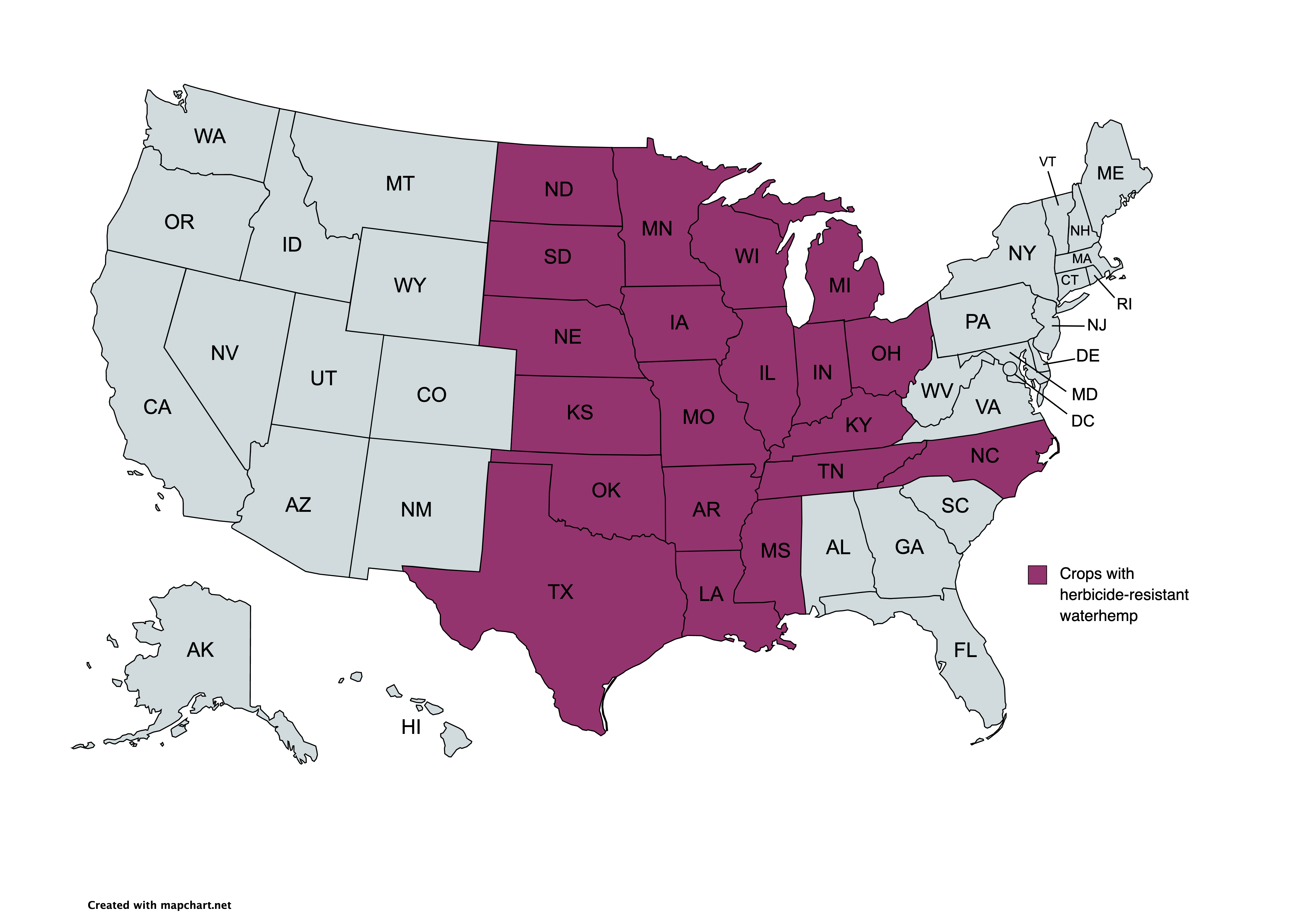Field Facts: Waterhemp

Waterhemp has the unique ability to adapt to control tactics and has evolved resistance to multiple modes of action, making it one of the most challenging weeds that Midwest corn and soybean growers face today.

The chances of waterhemp developing resistance to herbicides that utilize a single mode of action are very high. In fact, waterhemp has shown resistance to herbicides in seven herbicide groups to date.2 That’s why it’s important to implement a program approach that incorporates multiple modes of action — ideally between seven and nine modes of action over a two-year rotation cycle.
This means starting clean with a burndown, using powerful preemergence herbicides with residual activity and then using effective postemergence herbicides that also have residual activity. Key corn herbicides from the Corteva Agriscience portfolio include Resicore® XL herbicide, Kyro™ herbicide and SureStart® II herbicide. For soybeans, consider Kyber® herbicide, Sonic® herbicide and Enlist® herbicides.
In addition to using a strategic combination of herbicides, growers can use several cultural practices to help control waterhemp, such as:
Work with your customers and your Corteva Agriscience representative to identify and implement best management practices for waterhemp and other yield-robbing weeds in your area.
1United Soybean Board. 2023. Waterhemp. https://iwilltakeaction.com/weed/common-waterhemp.
2Take Action. 2023 Weed Out Resistance. https://iwilltakeaction.com/uploads/files/20200921-factsheet-11threaten-poster-usdadraft.pdf
Enlist Duo® and Enlist One® herbicides are not registered for sale or use in all states or counties. Contact your state pesticide regulatory agency to determine if a product is registered for sale or use in your area. Enlist Duo and Enlist One herbicides are the only 2,4-D products authorized for use with Enlist® crops. Consult Enlist herbicide labels for weed species controlled. Kyber®, Kyro™, Resicore® XL, Sonic® and SureStart® II are not registered for use in all states. Kyro, Resicore XL and SureStart II are not available for sale, distribution or use in Nassau and Suffolk counties in the state of New York. Contact your state pesticide regulatory agency to determine if a product is registered for sale or use in your state. Consult the label before purchase or use for full details. Always read and follow label directions.